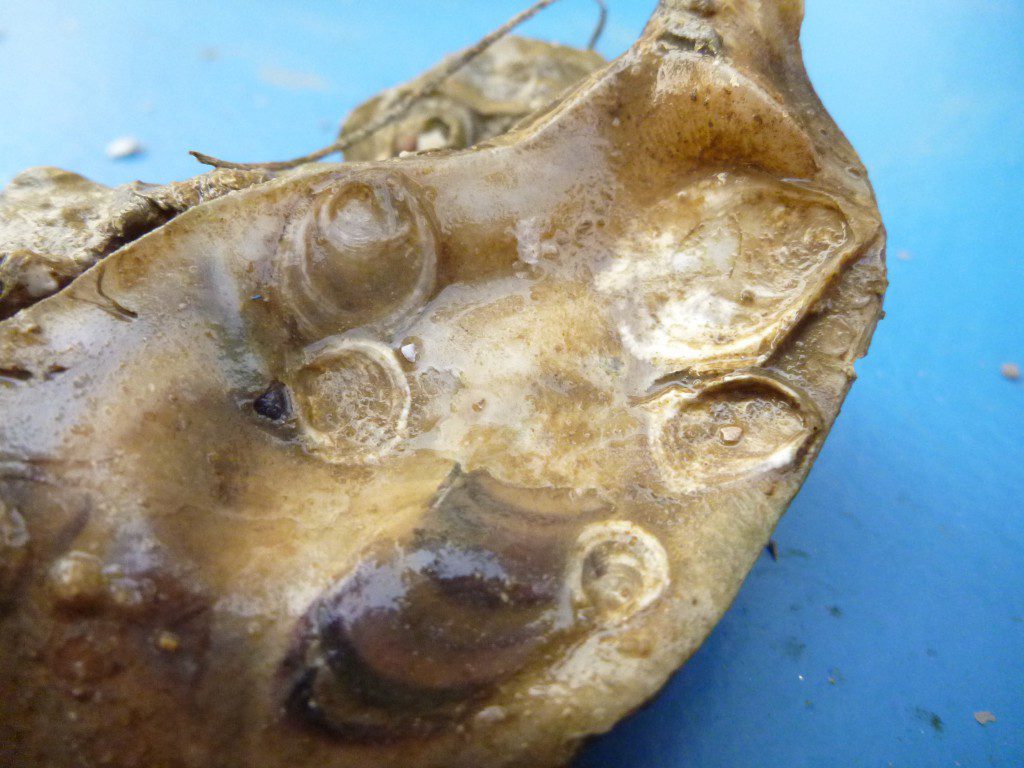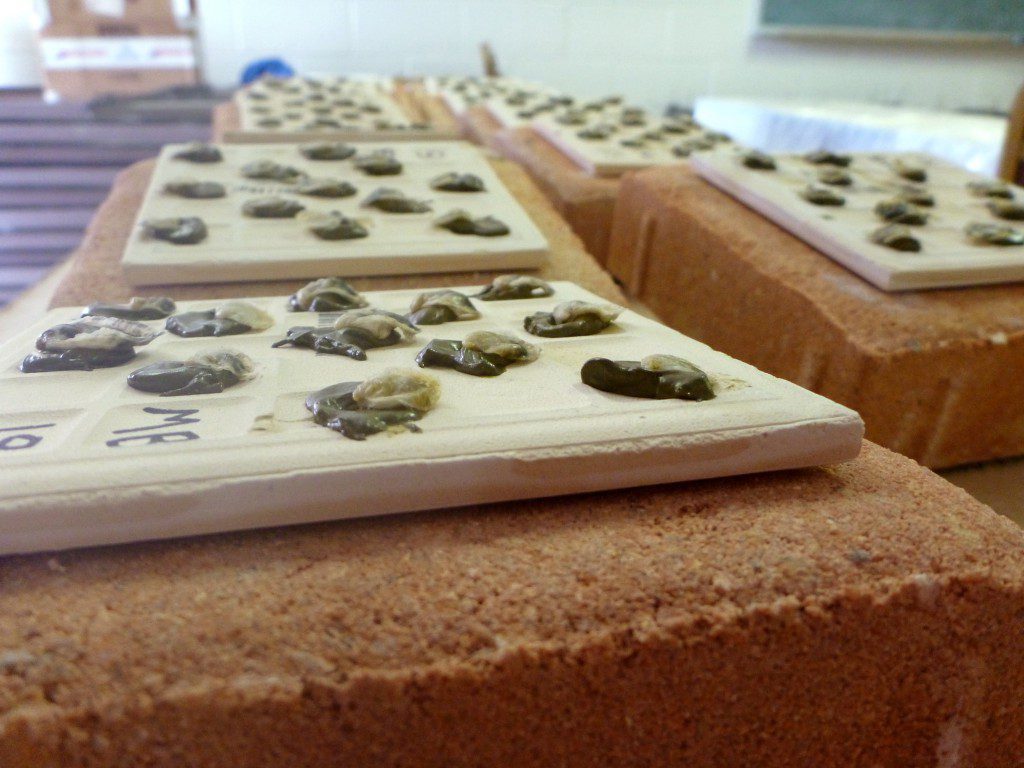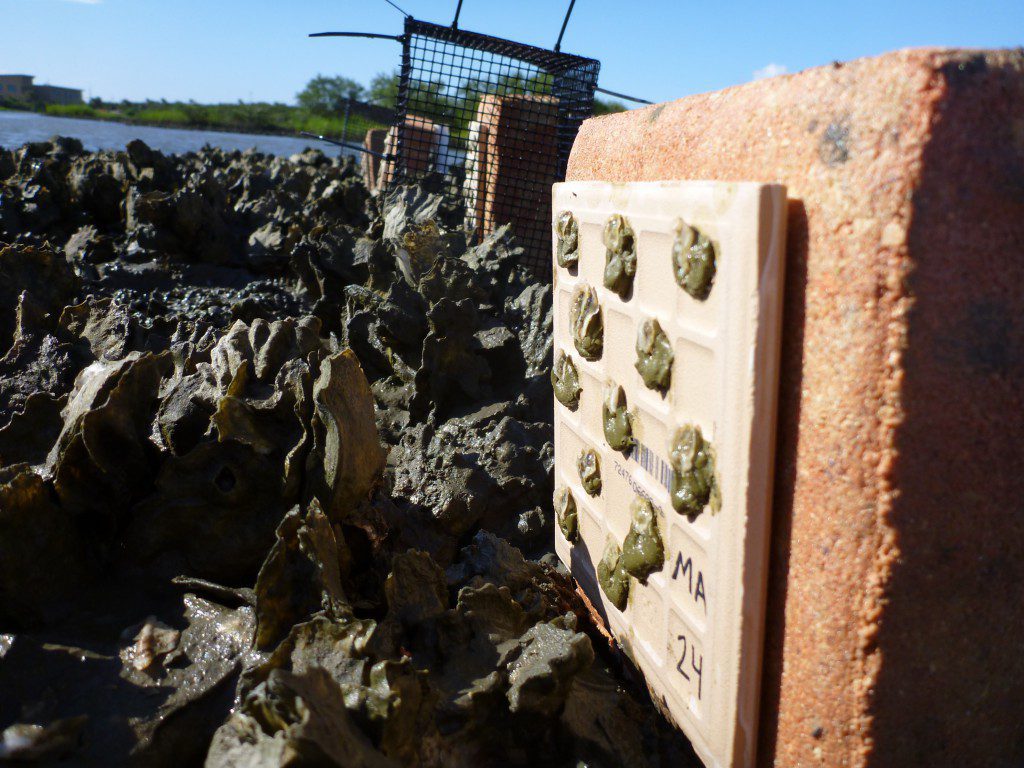Last week, Dr. David Kimbro broke nutrients and oysters down for us. But what if oysters are too scared to eat the nutrient fed plankton they need to survive? David and Randall take us another step closer to understanding the Ecology of Fear, examining oysters’ choices and how their behavior affects the important habitat they create. Stay tuned over the following weeks as they unravel the relationships between predators and prey on oyster reefs and their neighboring coastal ecosystems. We’ll also continue to follow David’s crew in Apalachicola, Hanna and Stephanie, as they research the oyster fishery crisis.
Dr. Randall Hughes FSU Coastal & Marine Lab
 I recently moved and was faced with the dilemma of finding a place to live. This can be a touch decision, especially when you’re in a new city or town. Which neighborhood has the best schools? The best coffee shop? Friendly neighbors? Low crime? My solution was to find something short-term while I scope the place out some more, and then I can decide on something more permanent. (As anyone who has me in their address book knows, “permanent” is a very relative term – I have changed residences a lot over the last 15-20 years!) But imagine you had just one shot – one, for your whole life – to decide where to settle down. Talk about a tough decision! That’s what oysters have to do, because once they settle down and glue themselves to their location of choice, they don’t have the opportunity to move around any more. So how do they decide?
I recently moved and was faced with the dilemma of finding a place to live. This can be a touch decision, especially when you’re in a new city or town. Which neighborhood has the best schools? The best coffee shop? Friendly neighbors? Low crime? My solution was to find something short-term while I scope the place out some more, and then I can decide on something more permanent. (As anyone who has me in their address book knows, “permanent” is a very relative term – I have changed residences a lot over the last 15-20 years!) But imagine you had just one shot – one, for your whole life – to decide where to settle down. Talk about a tough decision! That’s what oysters have to do, because once they settle down and glue themselves to their location of choice, they don’t have the opportunity to move around any more. So how do they decide?

This oyster shell, harvested from an intertidal St. George Island reef, had been settled by multiple young oysters called spat. Spat grow into mature oysters with a hard shell, fused with the oyster on which they originally landed. Clumps of attached oysters form a crucial coastal habitat.
It turns out that oyster larvae (baby oysters swimming in the water) can use a number of “cues” to help them in the house-hunting process. First of all, they can detect calcium carbonate, the material that makes up oyster shells (and other things) – if there’s lots of calcium carbonate in an area, that could be a good sign that it’s an oyster reef. (Or it could be a sign that people have put a lot of cement blocks in the water in the hopes that oysters will settle and create a reef – that’s how a lot of oyster restoration projects are started.) Some recent research even shows that oysters can detect the sounds of an oyster reef, and then swim in that direction! Maybe these guys are smarter than we think…
Regardless of how oysters decide, there are times when we are also faced with the question of what makes good oyster habitat, or deciding which area is better than another. As scientists, we turn to experiments. One type of experiment that we have perfected over the years involves getting juvenile oysters- (either from the field, which can be pretty difficult -as you can see from the first round of our tile experiment, or from a hatchery), and gluing them to portable sections of “reef” (ceramic tiles weighed down by bricks). LOTS of ceramic tiles and bricks. We’re talking 800+ ceramic tiles and 700+ bricks last summer alone! That’s enough to make a path that is ~2 football fields long. All moved by truck, hand, boat, hand, kayak, and hand to their temporary location on a reef (and then moved back again when the experiment is done). But I digress.

In the second incarnation of the tile experiment, oyster spat were attached to tiles with an epoxy used in the repair of boat hulls. The tiles in the first version- the ones in the video above- were assembled differently. In a video we’ll premiere later this month, we’ll look at the twists and turns the experiment took.
After attaching the juvenile oysters to the tiles with a lovely substance known as z-spar, we enclose some tiles in cages to protect them from oyster predators, and we leave others with no cage so they are “open” to predators. (There’s also a 3rd group – the “cage control” – that get 1/2 a cage so we can test whether the cage has effects on the oysters other than keeping out the predators.) Then we take our oyster tiles and put them out in the field at different sites that we want to test. By observing the survival and growth of the ones in the cage (where no predators have access), we can get a general sense for whether it’s a good environment or not. Lots of large, live oysters are a sign of a good environment – plenty of food, good salinity (not too salty or too fresh), good temperature, etc. Also, by comparing the survival of the ones in a cage vs. not in a cage, we can get an idea of how many predators are around – lots of live oysters in the cage and none out of the cage is a pretty good sign that oysters are getting eaten. (If oysters in the cage are dead and oysters outside of the cage are missing, it’s a little tougher to figure out exactly what’s causing it, but it’s clearly not a good place for oysters to live!)

Experimental spat tiles at the Guana Tolomato Matanzas National Estuarine Research Reserve- open, closed, and partially open.
Of course, the oysters themselves don’t know whether they are nice and safe inside our cages, or easy pickings for a predator. So if there are lots of predators lurking around the reef, the oysters may try to “hide”. Obviously, hiding for an oyster does not mean packing up and moving elsewhere, but they do have a few tools at their disposal. In the short term, the oysters can choose not to open up their shells and feed (filter water) as often. This strategy has 2 benefits – 1, they are less vulnerable to predators when their shells are closed and 2, they aren’t releasing lots of invisible chemical cues in the water when they’re closed, so it’s harder for the predators to tell they are there. But as any of you who have been sticking to your New Year’s resolution to lose weight will know, there’s only so long that you can go without eating before that strategy loses its appeal! Over the longer term, the oysters can decide to devote more of the energy that they get from eating to create a thicker, stronger, rougher shell, rather than plumping up their tissues.
So, those are the big-time decisions that an oyster faces: where to live, and when to eat. Sounds kind of familiar…
We want to hear from you! Add your question or comment.
In the Grass, On the Reef is funded by the National Science Foundation.

4 comments
[…] Donate Skip to content HomeThe ScienceThe “In the Grass, On the Reef” Master PlanCoastal Habitat Quick DictionarySalt MarshIn the Grass- Salt Marsh Biodiversity StudyMeet the Species “In the Grass”Oyster ReefOn the Reef- The Biogeographic Oyster StudyMeet the Species “On (and swimming around) the Reef”Watch Oysters GrowJacksonvilleSaint AugustineAlligator HarborSeagrass BedPredatory Snails, and Prey, of Bay Mouth BarIn the Grass, On the Reef DocumentaryEcoAdventures North FloridaEcoAdventures HomeActivitiesPaddlingHikingBird/ Wildlife WatchingArt/ PhotographyHistory/ ArcheologyApalachicola River and Bay Basin ← Fear and the Choices Oysters Make […]
[…] oyster at a given location by monitoring the growth of young oysters (spat) in a controlled unit- the spat tile. We’ll be further exploring the use of spat tiles in their NSF funded oystern study in the […]
[…] If you’d like to know more about spat (young oysters), we covered that a few weeks ago in this video. […]
[…] the last few weeks, we’ve explored the ecology of fear in oyster reefs. What makes oysters too scared to eat, potentially keeping them from reaching market size or filtering water? What makes mud crabs too […]
Comments are closed.